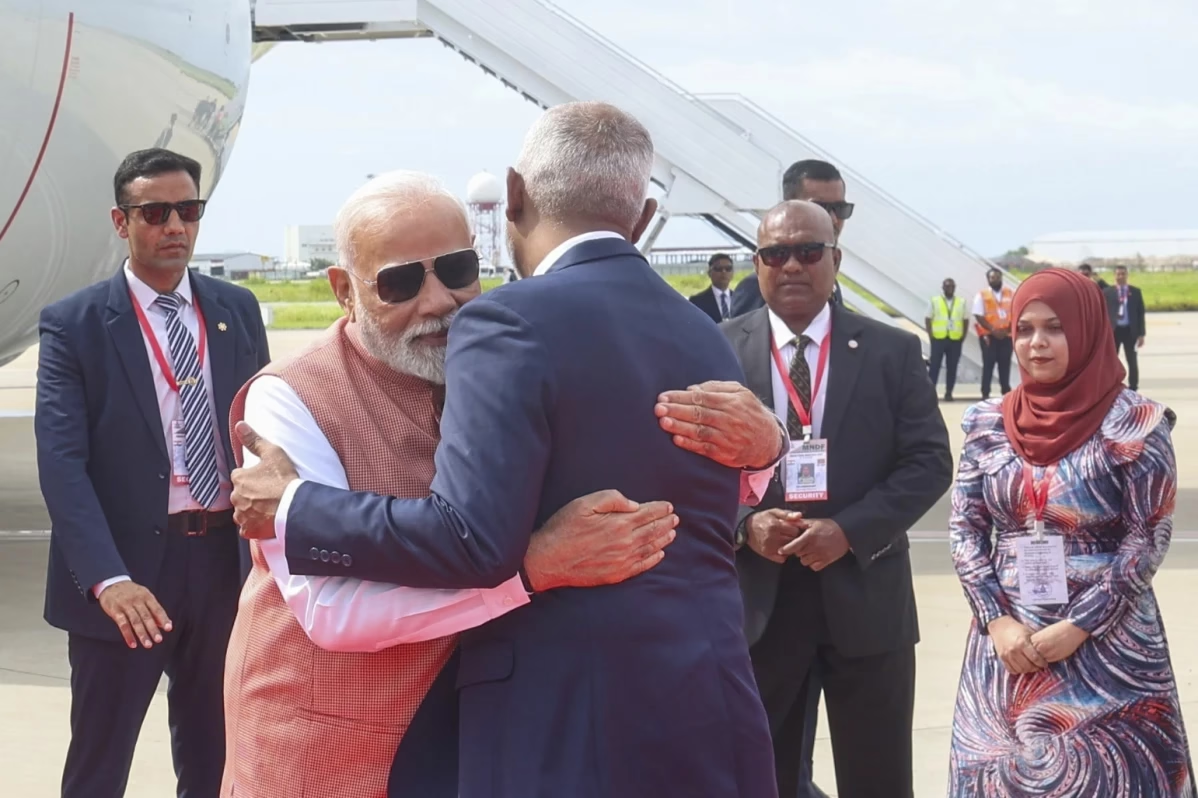In a region where alliances shift fast, India’s diplomatic reboot with the Maldives stands out. Prime Minister Narendra Modi’s visit to Malé on July 26, for the Maldives’ 60th Independence Day, capped a reset in relations that seemed nearly impossible just 18 months ago.
Back then, newly elected Maldivian President Mohamed Muizzu ran on an “India Out” campaign. He demanded the withdrawal of Indian military personnel, amplified concerns about sovereignty, and aligned his foreign policy closer to Beijing. Indian tourists, once a major source of revenue, responded with anger, and arrivals dropped by 42 percent in early 2024.
India, instead of retaliating, chose restraint. Its military staff quietly exited by mid-2024, replaced by civilian technicians from Hindustan Aeronautics Limited to maintain humanitarian and surveillance aircraft. New Delhi continued to send rice, medicine, and essentials, keeping lifelines open even as the rhetoric ran hot.
By late 2024, the approach had started to yield results. India extended ₹470 crore in grants and a ₹3,000 crore currency swap to help shore up the Maldives’ fragile finances. The aid package expanded further in early 2025 to ₹600 crore, and India committed to infrastructure upgrades on 28 islands, focusing on water systems, health centers, sanitation, and roads. A deal to bring India’s UPI digital payment system to the Maldives was signed in August 2024 and launched within months.
Modi’s return to Malé this July was loaded with symbolism. He was greeted by schoolchildren chanting patriotic slogans, Indian and Maldivian flags lining the streets, and crowds from the Indian diaspora at the airport. During a joint press appearance, Modi and Muizzu emphasized a shared vision for peace, cooperation, and regional stability. Modi also inaugurated the Dhoshimeyna Building, the Maldives’ new Ministry of Defence headquarters, built with Indian aid.
The visit wasn’t just optics. India announced a fresh $565 million line of credit and restructured Maldivian debt, reducing repayment pressure by about 40 percent. Eight agreements were signed, covering tourism, fisheries, digital payments, health, and trade. The two sides began talks on a bilateral free trade agreement.
The tone in Malé shifted. Former President Mohamed Nasheed credited India with helping prevent financial collapse. Muizzu, who once pushed for India’s exit, described New Delhi as a “crucial partner” and acknowledged its role in digital and infrastructure development.
As Modi departed Malé, Muizzu called the moment “defining.” From confrontation to cooperation, India’s soft-power gamble had paid off, measured in megawatts, miles of roads, and the quiet rebuilding of trust.
China remains active in the region, but the Maldives appears to be recalibrating. India is back in the lead, not through coercion, but consistency. Modi’s visit signaled more than a thaw; it marked India’s return as the Maldives’ first call for support, not its fallback.


Leave a Reply